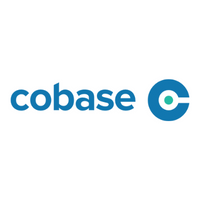How companies can improve their multibank cash management
07-02-2022 | Cobase | treasuryXL | LinkedIn |
The complexity of corporate structures and the disparate relationships that develop over the lifetime of an organisation mean managing bank interactions has become a complex task.

Multiple banking relationships
Businesses can grow through mergers and acquisitions. These enlarged organisations often comprise multiple subsidiaries working in several different currencies with a variety of banks with which they will typically hold numerous accounts. Making smart cash management decisions requires tactical and strategic decision-making, which can often be overshadowed by operational demands. Corporates with multiple banking relationships will find managing payments and cash a cumbersome process that involves logging in and out of different bank portals and managing disparate authorisation schemes while trying to ensure that bank data and data in ERP or accounting systems is synchronised.
In some organisations, managing cash positions over multiple banks and accounts remains a manual process, increasing the possibility of human error. When looking to execute sophisticated liquidity forecasting and/or manage foreign currency exposure, this process may become significantly more difficult and risky. At the heart of these challenges lies the current state of connectivity between ERP/accounting systems and banks. The available integrations can be cumbersome, resulting in lengthy IT projects.
Room for improvement
As a result there is scope for significant improvement in this area, which can be achieved through the use of specific solutions centered on connectivity. Optimally managing payments and cash requires seamless, robust and real-time connectivity between banks and financial systems and the execution of all payment and cash management tasks in the company’s administrative environment or another single user interface dedicated to this task. Solutions that can help corporates gain visibility into their overall cash positions and run an efficient payments operation across the whole company do exist. Banks do provide solutions to let companies connect their ERP or accounting systems to their bank accounts. Companies who do all their business with a single bank should be able to access a portal and get connectivity to their back-office functions in a rather efficient way.
Efficient bank connectivity
However, for corporates that have significant business with multiple banks, the situation is more complex. A single bank will not be able to provide a robust solution to reach all other banks. Most certainly not with all sorts of different payment formats and products, bulk payments and local reporting standards have to be used. In this scenario, corporates are faced with a vast amount of workarounds, dedicated applications, and interfaces to perform cash management across their banks. It is not hard to envisage the high degree of inefficiency and risk introduced to the process by this way of working. These drawbacks have been highlighted in various research reports where corporate clients are asked about the biggest challenges they faced when integrating with a bank.
Efficient bank connectivity is the first step towards optimized multibank cash management. Once this foundation is in place it can be combined with applications that can efficiently manage the bank accounts, and the overall solution can be further optimized to perfection.
A reality check on Open Banking
To know more about the benefits of new developments in bank connectivity for treasury and cash management you can download our white paper. It offers insights into how corporate treasurers and cash managers can avoid pitfalls.







